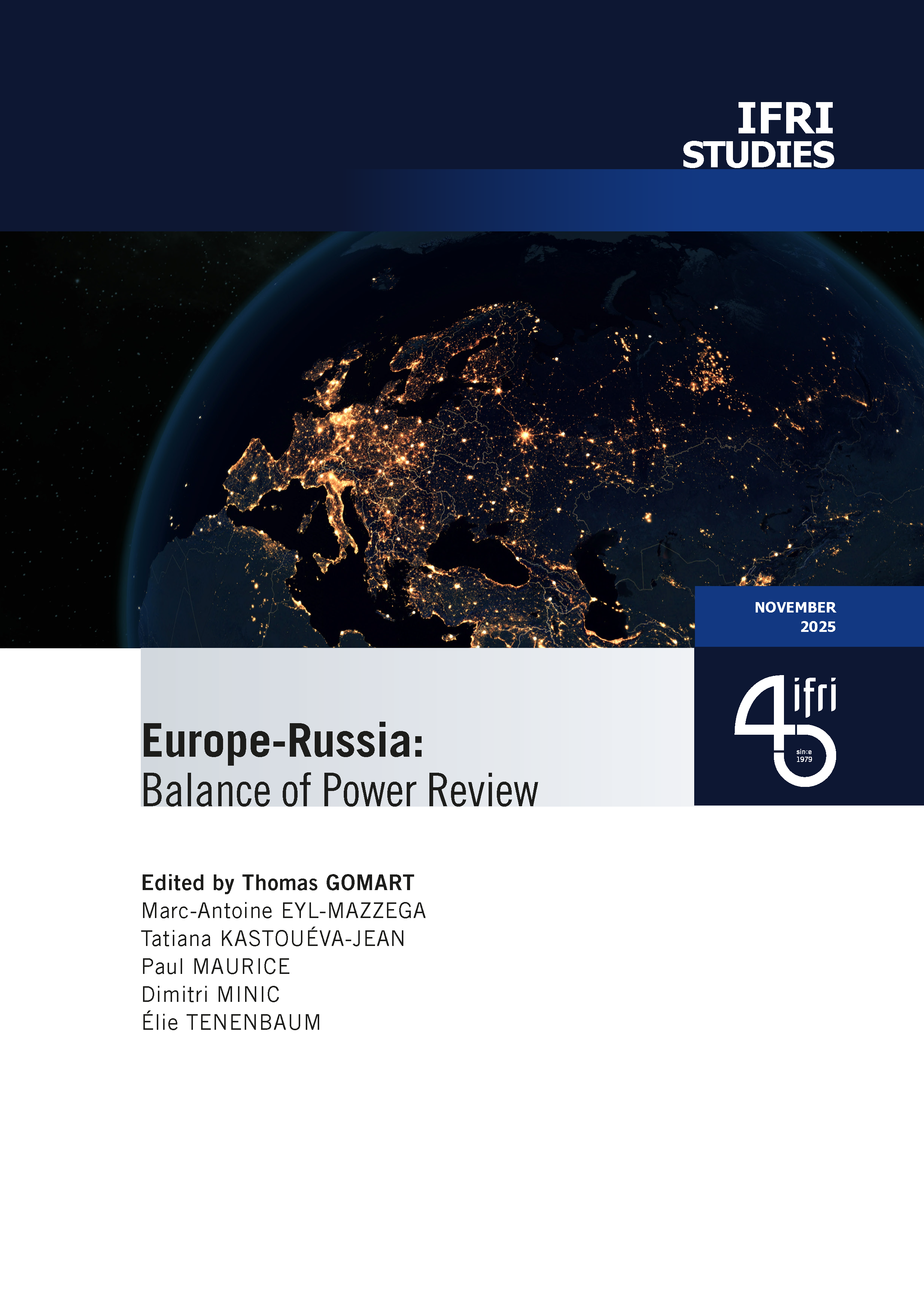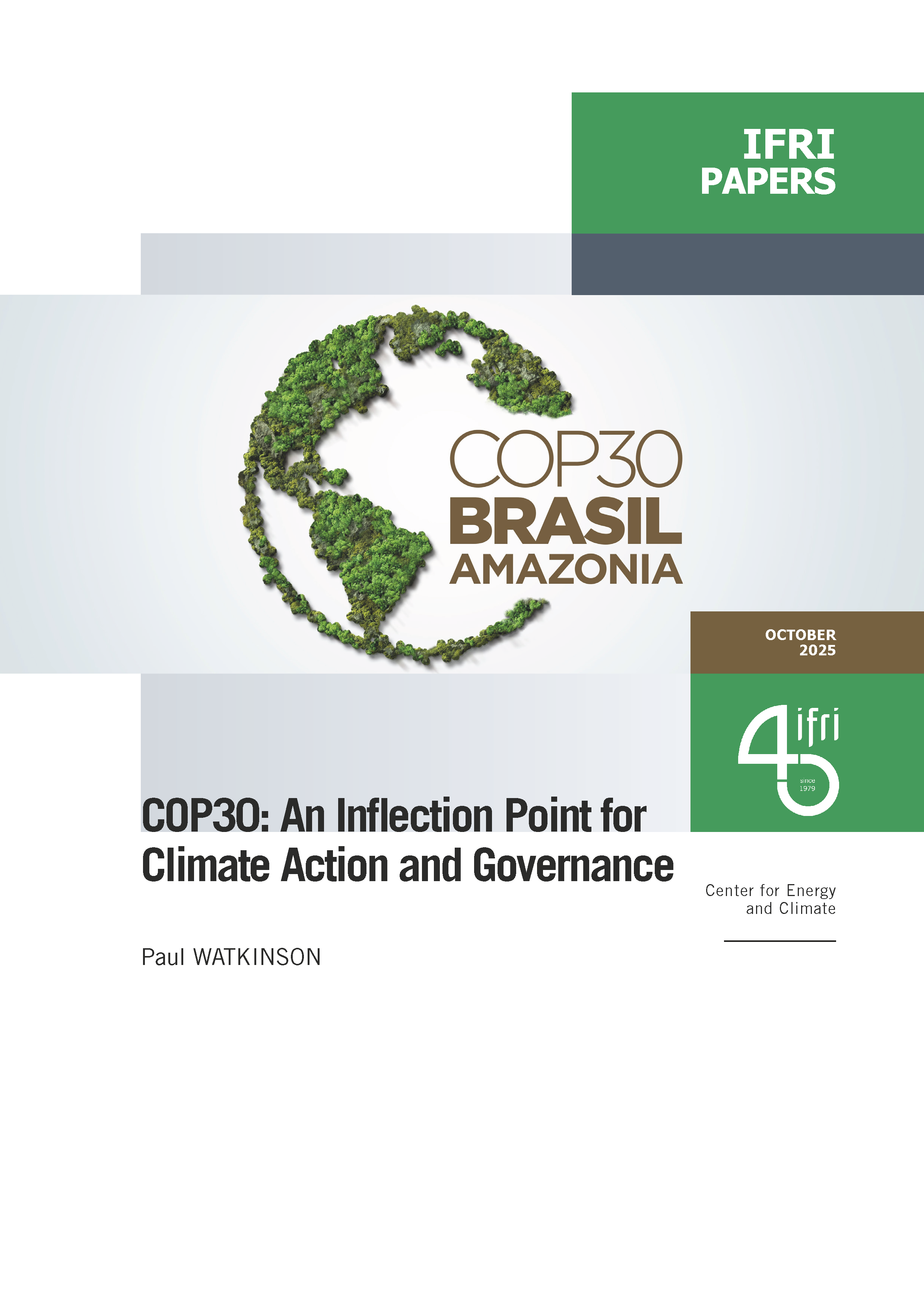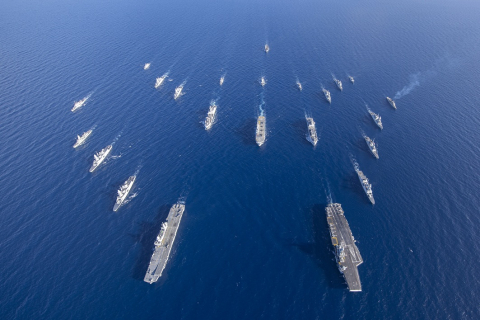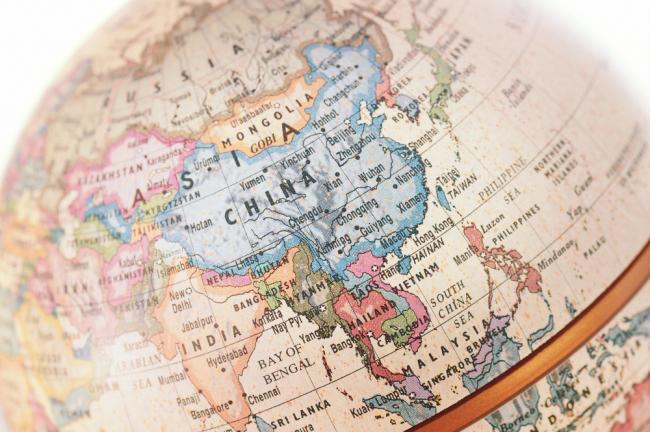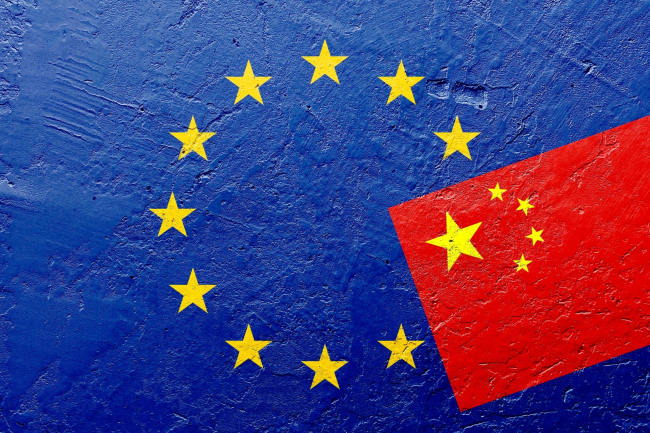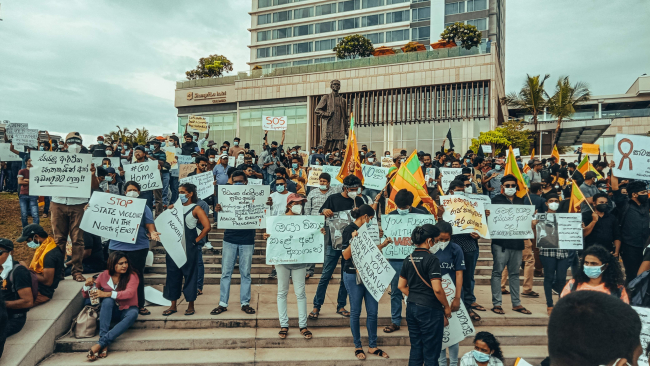AI and Technical Standardization in China and the EU: Diverging priorities and the need for common ground
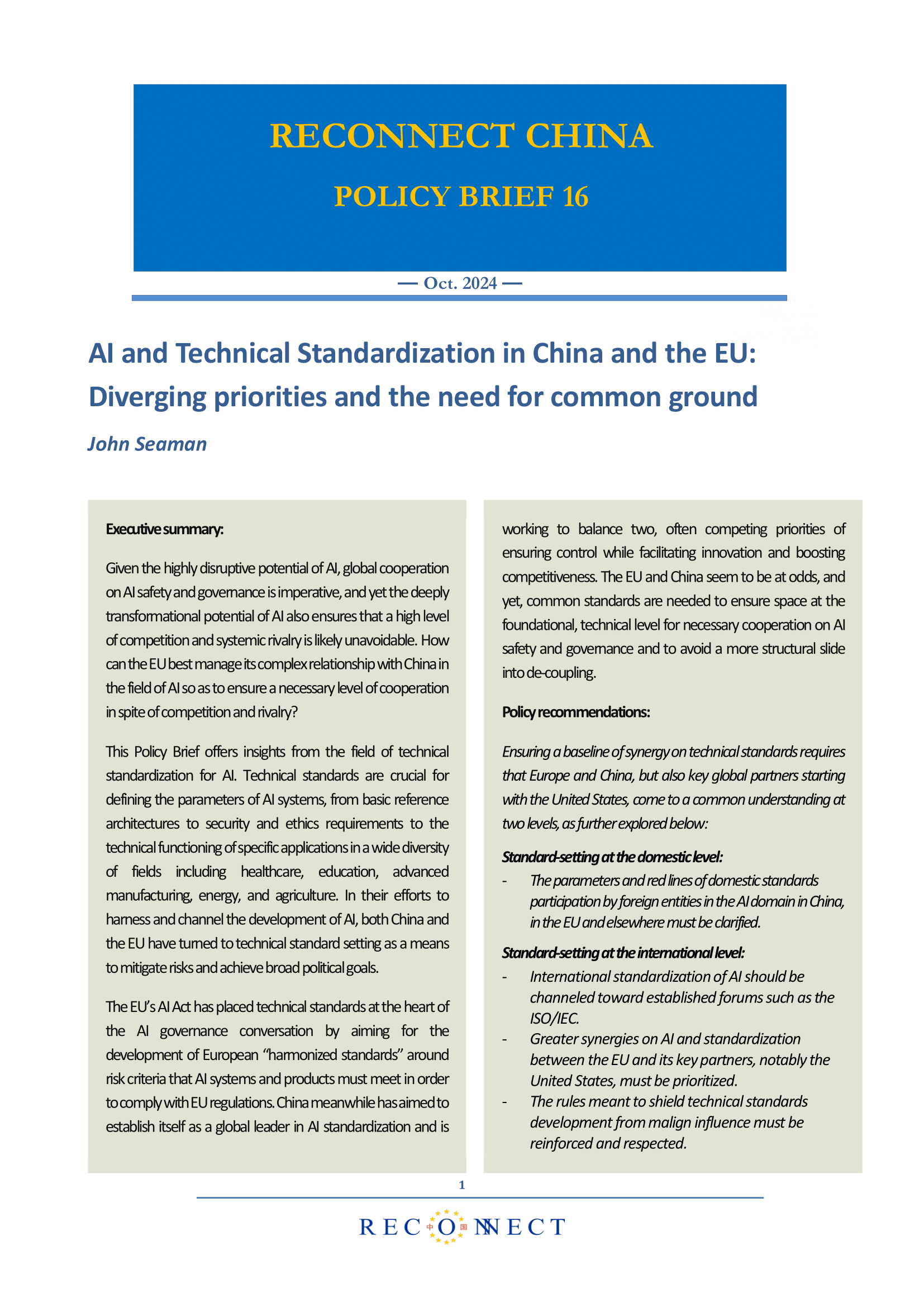
Given the highly disruptive potential of AI, global cooperation on AI safety and governance is imperative, and yet the deeply transformational potential of AI also ensures that a high level of competition and systemic rivalry is likely unavoidable. How can the EU best manage its complex relationship with China in the field of AI so as to ensure a necessary level of cooperation in spite of competition and rivalry?
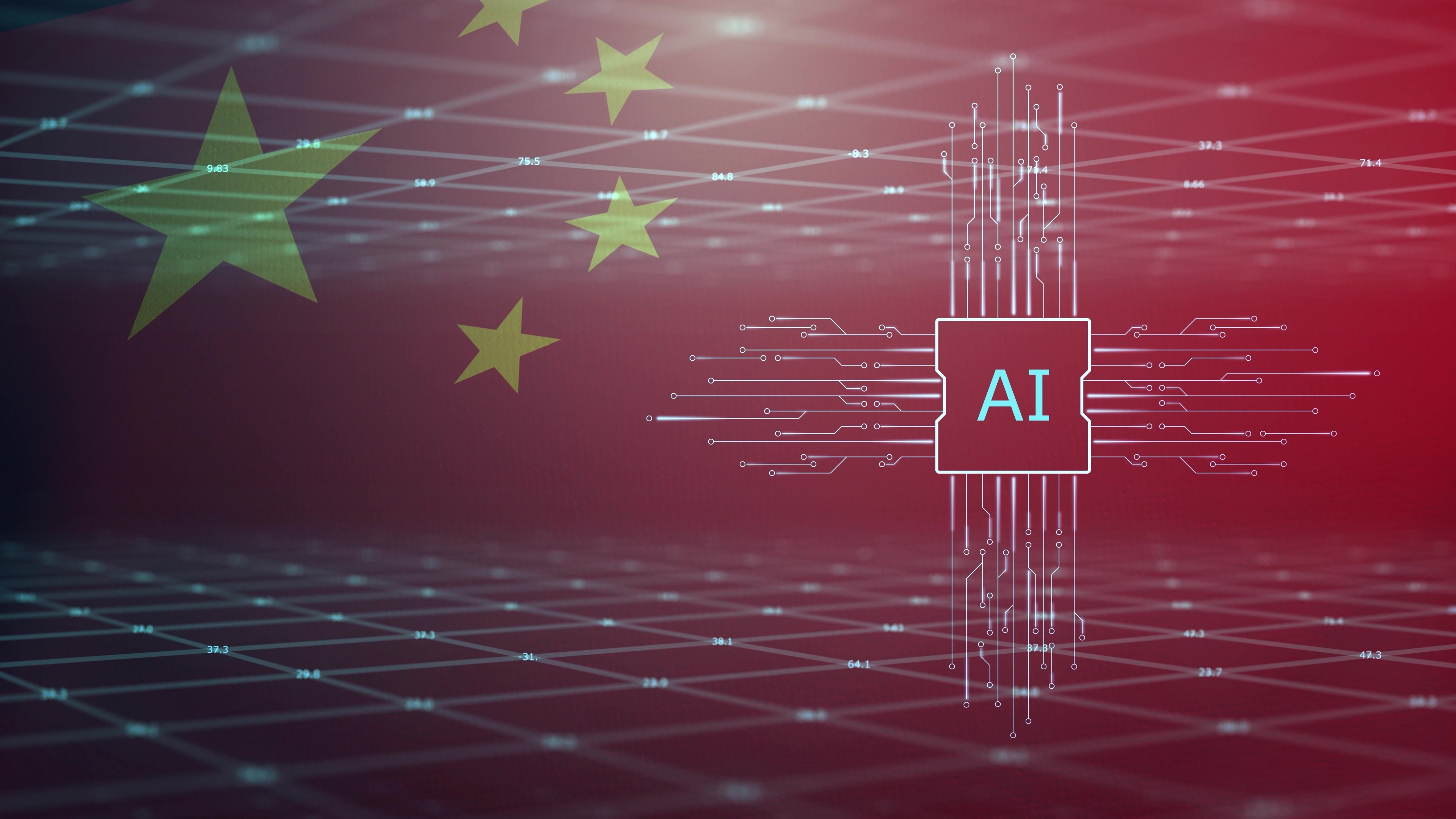
This Policy Brief offers insights from the field of technical standardization for AI. Technical standards are crucial for defining the parameters of AI systems, from basic reference architectures to security and ethics requirements to the technical functioning of specific applications in a wide diversity of fields including healthcare, education, advanced manufacturing, energy, and agriculture. In their efforts to harness and channel the development of AI, both China and the EU have turned to technical standard setting as a means to mitigate risks and achieve broad political goals.
The EU’s AI Act has placed technical standards at the heart of the AI governance conversation by aiming for the development of European “harmonized standards” around risk criteria that AI systems and products must meet in order to comply with EU regulations. China meanwhile has aimed to establish itself as a global leader in AI standardization and is working to balance two, often competing priorities of ensuring control while facilitating innovation and boosting competitiveness. The EU and China seem to be at odds, and yet, common standards are needed to ensure space at the foundational, technical level for necessary cooperation on AI safety and governance and to avoid a more structural slide into de-coupling.
Policy recommendations:
Ensuring a baseline of synergy on technical standards requires that Europe and China, but also key global partners starting with the United States, come to a common understanding at two levels, as further explored below:
Standard-setting at the domestic level:
- The parameters and red lines of domestic standards participation by foreign entities in the AI domain in China, in the EU and elsewhere must be clarified.
Standard-setting at the international level:
- International standardization of AI should be channeled toward established forums such as the ISO/IEC.
- Greater synergies on AI and standardization between the EU and its key partners, notably the United States, must be prioritized.
- The rules meant to shield technical standards development from malign influence must be reinforced and respected.
Download the ReConnect China Policy Brief via the project’s website: AI and Technical Standardization in China and the EU: Diverging priorities and the need for common ground

Available in:
Themes and regions
Share
Related centers and programs
Discover our other research centers and programsFind out more
Discover all our analyses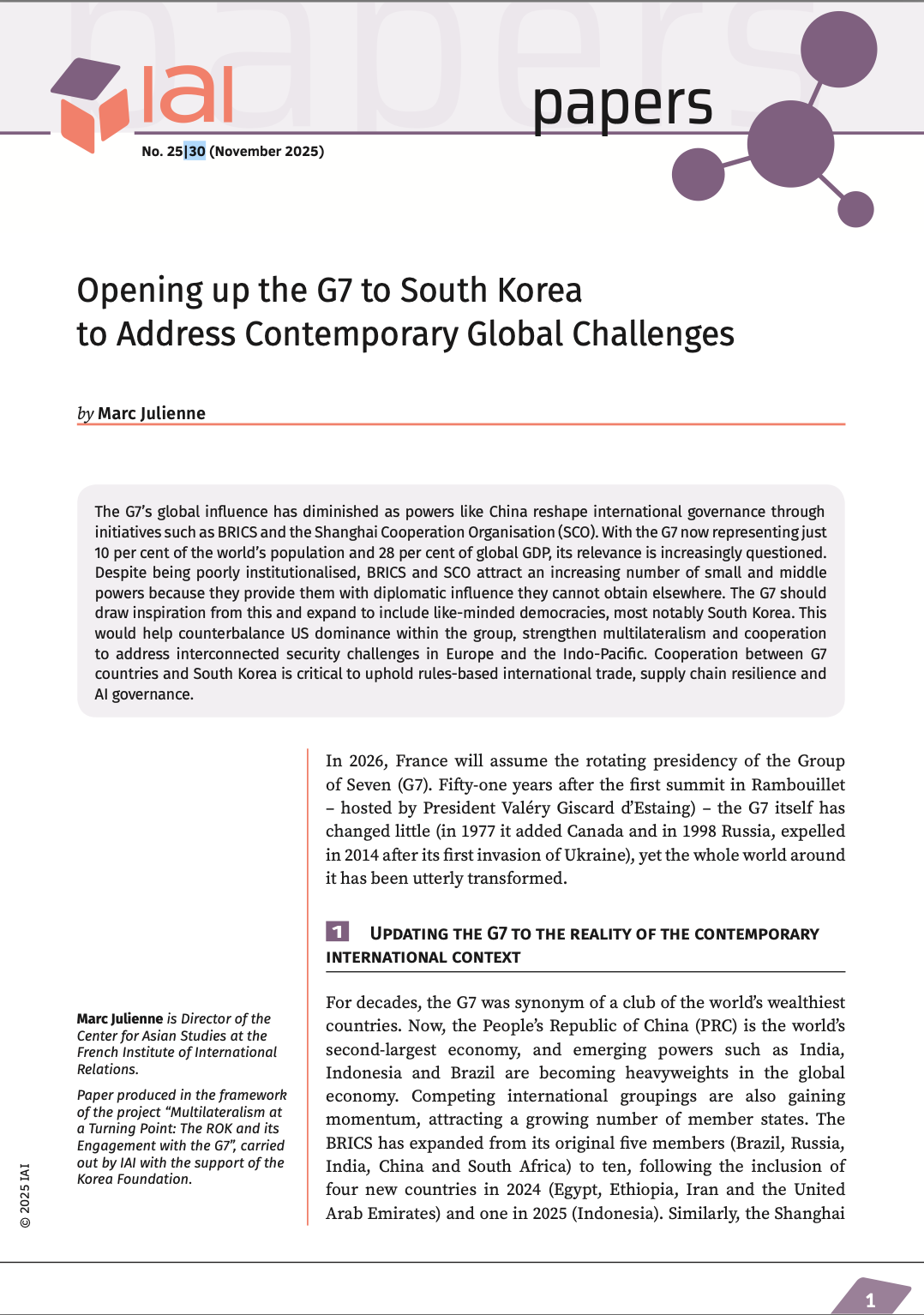
Opening up the G7 to South Korea to Address Contemporary Global Challenges
The G7’s global influence has diminished as powers like China reshape international governance through initiatives such as BRICS and the Shanghai Cooperation Organisation (SCO). With the G7 now representing just 10 per cent of the world’s population and 28 per cent of global GDP, its relevance is increasingly questioned.
Expanding SPDMM as a pivotal institution in the Pacific – A French perspective
The South Pacific Defence Ministers’ Meeting (SPDMM) is the only forum that brings together defense ministers from the wider South Pacific — including Chile, which is hosting it for the first time. This heterogeneous group of countries with varying resources, capacities, and interests — Australia, Chile, Fiji, France, New Zealand, Papua New Guinea (PNG), and Tonga — are united by their shared determination to strengthen cooperation on maritime security and humanitarian assistance and disaster relief (HADR) activities.
EU’s Derisking From China: A Daunting Task
With economic security as a major concern, the EU has recently turned to “derisking” from China. The EU strategy entails reducing critical dependencies and vulnerabilities, including in EU supply chains, and diversifying where necessary, while recognizing the importance and need to maintain open channels of communication.
Sri Lanka’s NPP Government. From System Change to Structural Compliance
In September 2024, a relative outsider to Sri Lanka’s two-party-dominated political system, Anura Kumara Dissanayake, won the presidential elections. The anti-establishment, populist movement he represented, the National People’s Power (NPP), went on to receive an overwhelming mandate in the November 2024 general elections, winning 159 seats in a 225-member parliament.


